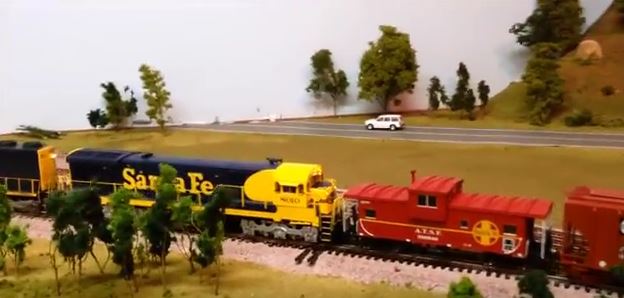Everything on model trains, model railroads, model railways, locomotives, model train layouts, scenery, wiring, DCC and more. Enjoy the world's best hobby... model railroading!
The Advantages of Helper Engines
A helper engine is a locomotive that temporarily helps a train in need of additional traction or power to climb a gradient. In some countries, such as the United Kingdom and Australia, a helper engine might be called a bank engine (or banker). The term pusher engine is also used in the USA. Regardless of what you call them, these engines are most commonly used in mountain divisions (helper districts) where the ruling gradient might necessitate substantially more power for a train to climb.
In some situations a helper, with its own crew, would be utilized to assist the train over a short distance. The rear end caboose would be removed so the
helper locomotive could couple onto the last car in the train. On reaching the top of the rise, the helper would cut off and the train reassembled ready for its downhill trip. The helper loco would then return to where it first joined the train, and be ready to assist the next train.
In other instances a train would be assisted by a Distributed Power Unit (DPU). This is basically an unmanned helper locomotive remotely control from the lead cab. Depending on the load and gradient, it could be positioned at the rear of the train or in the middle. Apart from helping a train climb a steep gradient, a DPU can have benefits on flatter land. Instead of being added just before the climb, it could operate the length of a division.
There are definite advantages in distributing locos throughout a long train and having them operate at the same speed. This can reduce the physical forces on the coupler drawbars and cars. By doing this; fewer cars get pushed (and pulled) by each loco set. Locomotives can be positioned mid-train, at the rear end, or in both positions, to reduce the time required to set and release the brakes.
One Response to The Advantages of Helper Engines
Leave a Reply





















Nice article just a bit of historical data in my particular interest the north British railway the banker was coupled behind the train engine not in front as seen on the west Highland line